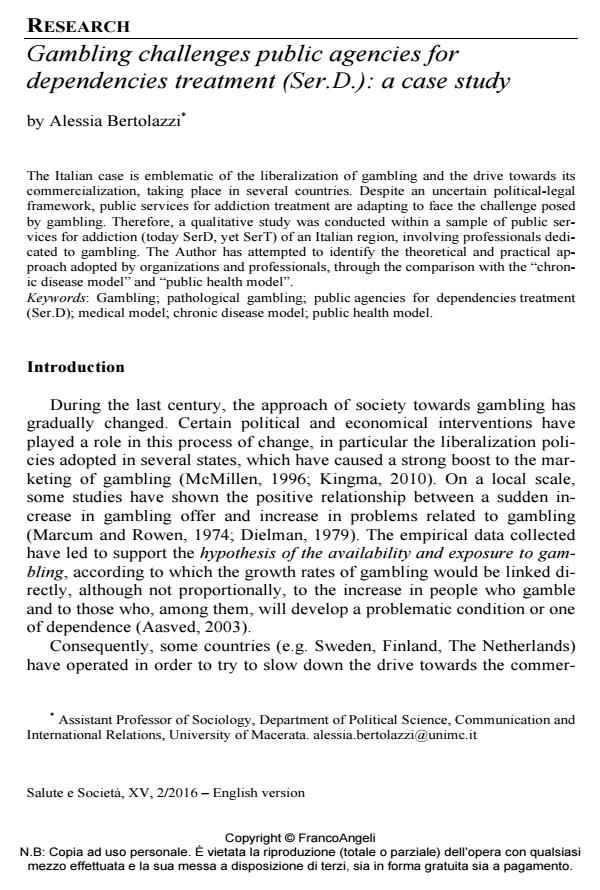Gambling challenges public agencies for dependencies treatment (Ser.D.): a case study
Titolo Rivista SALUTE E SOCIETÀ
Autori/Curatori Alessia Bertolazzi
Anno di pubblicazione 2016 Fascicolo 2016/suppl. 2
Lingua Inglese Numero pagine 15 P. 97-111 Dimensione file 94 KB
DOI 10.3280/SES2016-SU2008
Il DOI è il codice a barre della proprietà intellettuale: per saperne di più
clicca qui
Qui sotto puoi vedere in anteprima la prima pagina di questo articolo.
Se questo articolo ti interessa, lo puoi acquistare (e scaricare in formato pdf) seguendo le facili indicazioni per acquistare il download credit. Acquista Download Credits per scaricare questo Articolo in formato PDF

FrancoAngeli è membro della Publishers International Linking Association, Inc (PILA)associazione indipendente e non profit per facilitare (attraverso i servizi tecnologici implementati da CrossRef.org) l’accesso degli studiosi ai contenuti digitali nelle pubblicazioni professionali e scientifiche
The Italian case is emblematic of the liberalization of gambling and the drive towards its commercialization, taking place in several countries. Despite an uncertain political-legal framework, public services for addiction treatment are adapting to face the challenge posed by gambling. Therefore, a qualitative study was conducted within a sample of public services for addiction (today SerD, yet SerT) of an Italian region, involving professionals dedicated to gambling. The Author has attempted to identify the theoretical and practical approach adopted by organizations and professionals, through the comparison with the "chronic disease model" and "public health model". l
Parole chiave:Gambling; pathological gambling; public agencies for dependencies treatment (Ser.D); medical model; chronic disease model; public health mode
Alessia Bertolazzi, Gambling challenges public agencies for dependencies treatment (Ser.D.): a case study in "SALUTE E SOCIETÀ" suppl. 2/2016, pp 97-111, DOI: 10.3280/SES2016-SU2008